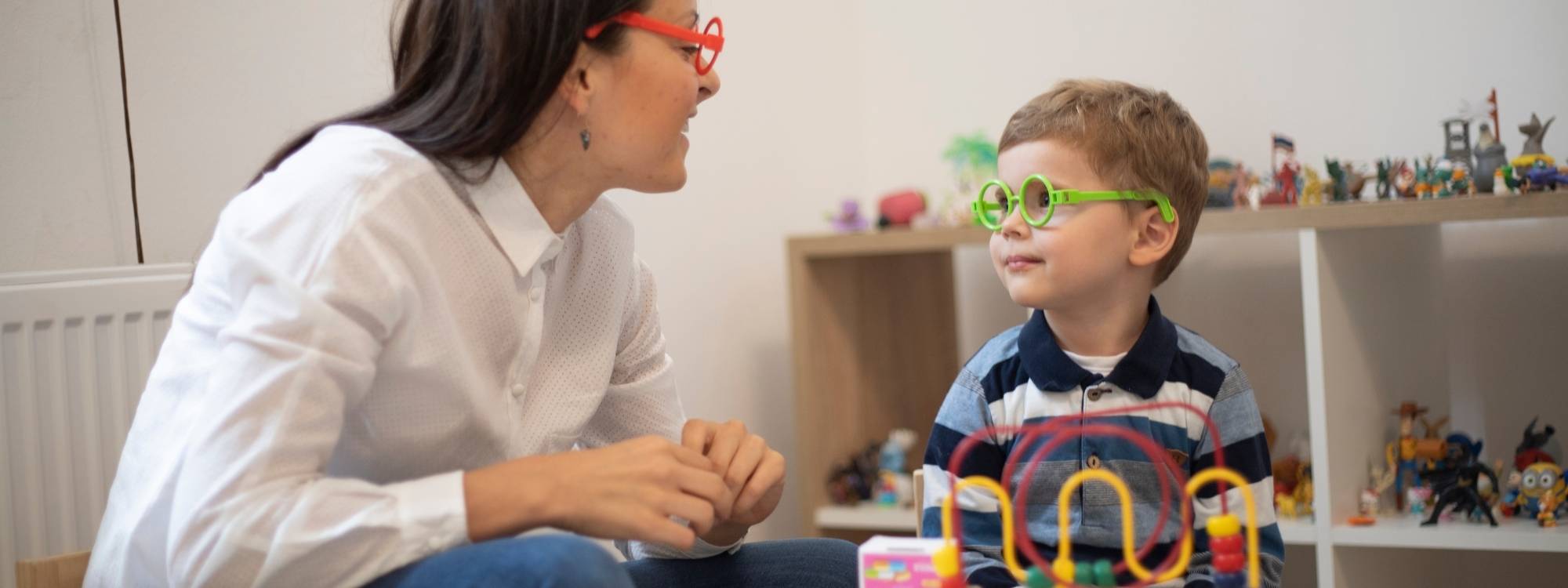Sensory Overload Autism: Signs, Support, and Solutions
Introduction to Sensory Overload
Sensory overload in autism occurs when the brain of an autistic person receives more input than it can effectively process. For many autistic individuals, everyday sensations like loud noises, bright lights, or certain textures can overwhelm the sensory system and trigger distress. While neurotypical people often filter out background stimuli, autistic individuals may experience this input more intensely.
Research shows that around 90% of autistic adults report sensory differences, often affecting their mental health, focus, and energy levels. Signs may include irritability, anxiety, restlessness, or emotional outbursts in response to common sensory stimuli.
Understanding sensory overload in autism is essential for creating supportive environments that cater to each individual’s unique sensory profile. When caregivers and educators recognize the signs, they can develop personalized strategies and sensory-friendly spaces to help autistic people feel safe, calm, and regulated.
Sensory Processing Differences
Sensory processing differences, often associated with sensory processing disorder, refer to how an individual receives, interprets, and responds to sensory stimuli. For autistic individuals, these differences are commonly observed as either hypersensitivity (heightened sensitivity) or hyposensitivity (reduced sensitivity) across various sensory systems.
Hypersensitive individuals may find everyday environments overwhelming, leading to sensory avoidance behaviors. For example, the hum of fluorescent lighting or the texture of certain clothes can trigger distress or avoidance. Conversely, hyposensitive individuals might seek more sensory input by touching textured objects, making repetitive noises, or engaging in movement-based behaviors.
Nearly all autistic people experience some form of sensory experiences related to sensory sensitivity. About 50% exhibit sensory-seeking behaviors, often as a way to regulate their nervous system. Sensory processing differences can affect auditory processing, visual input, and body awareness, which is why understanding a person’s unique sensory profile is essential for effective support.
The Role of the Nervous System
The nervous system plays a central role in processing sensory input in individuals on the autism spectrum. In autistic individuals, this system may become overwhelmed or dysregulated, leading to sensory challenges that interfere with daily activities and emotional well-being.
Key sensory systems include:
- Vestibular system: Controls balance and spatial orientation
- Proprioception: Informs body position and movement
- Interoception: Monitors internal body signals like hunger or pain
When these systems are dysregulated, autistic individuals may experience difficulty with body awareness, coordination, or internal regulation, particularly in the presence of visual distractions. Sensory integration therapy, occupational therapy, and tools like weighted blankets or deep pressure techniques can help calm the nervous system and support more effective sensory processing.
Physical Signs of Sensory Overload
Sensory overload manifests through a variety of physical signs in individuals who experience sensory overload, many of which are visible to caregivers and educators. These include:
- Covering ears or eyes in response to noise or bright lights
- Avoiding textures, food textures, or smells
- Rocking, flapping hands, or repetitive stimming behaviors
- Increased heart rate or physical agitation
- Withdrawal or attempts to escape overstimulating environments
These responses are not behavioral problems but coping mechanisms recognized in diagnostic criteria to manage overwhelming sensory input. Understanding these physical signs can help caregivers recognize overload early and intervene with calming strategies or environmental changes.
Behavioral Signs of Sensory Overload
In addition to physical reactions, sensory overload often leads to behavioral changes. These may appear as sudden emotional outbursts or shutdowns in response to overstimulation.
Common behavioral signs include repetitive behaviors and other reactions to sensory input.
- Meltdowns: Emotional explosions triggered by excessive sensory input, often followed by fatigue
- Flight, fight, or freeze responses: Attempts to flee or resist overwhelming environments
- Avoidance: Refusal to engage in certain activities or social situations
- Increased irritability or aggression
These behaviors are often misunderstood. They are not defiance but a signal that the person is struggling with sensory input. Preventative strategies, such as planning sensory breaks or using visual supports, can reduce the likelihood of behavioral overload.
Creating Sensory-Friendly Environments
Creating sensory-friendly environments can significantly reduce sensory challenges for autistic individuals. These spaces are designed to minimize triggers and provide safe, calming areas that support self-regulation.
To create a sensory-friendly environment:
- Control lighting: Use soft, natural light instead of fluorescent bulbs
- Reduce background noise: Incorporate soundproofing or white noise machines
- Use visual supports: Schedules, timers, or visual cues can add predictability
- Offer sensory tools: Fidget items, noise-canceling headphones, or weighted lap pads
These environments can be tailored to homes, classrooms, or community settings. Collaborating with an occupational therapist and involving the autistic individual in design decisions can improve effectiveness.
Managing Sensory Overload
Managing sensory overload involves proactive planning and the use of strategies, such as earplugs, that support emotional and physical regulation. These strategies vary by individual and should be based on their unique sensory profile.
Key management approaches include:
- Identifying triggers: Keep a log of sensory events and reactions
- Developing a sensory diet: Incorporate calming or stimulating activities throughout the day
- Providing control: Allow the person to control sensory input when possible (e.g., using sunglasses, earplugs)
- Building routines: Predictable schedules help reduce anxiety and sensory unpredictability
- Encouraging movement: Physical activity like jumping, swimming, or yoga can regulate the nervous system
Incorporating coping strategies, such as hair brushing, and adjusting environments can prevent sensory overload from escalating into a crisis.
The Importance of Body Awareness
Body awareness, understanding one’s body in space, is often affected by sensory processing issues. Autistic individuals may struggle with balance, coordination, or internal signals (such as pain or hunger).
Improving body awareness supports better sensory regulation. Activities that enhance body awareness include:
- Proprioceptive input: Deep pressure massages, weighted blankets, or resistance exercises
- Yoga and movement: Helps integrate body position and control
- Interoceptive awareness: Guided breathing or mindfulness exercises
These strategies promote physical self-regulation, reduce anxiety, and help prevent sensory overload in everyday environments, especially for autistic children.
Taking Sensory Breaks
Sensory breaks are intentional pauses during the day to regulate sensory input, which can be particularly beneficial for those with autism spectrum disorders. These breaks can reduce the buildup of overwhelming stimuli and support long-term regulation.
Effective sensory breaks may include:
- Listening to calming music or nature sounds
- Deep breathing or mindfulness activities
- Stretching or bouncing on an exercise ball
- Retreating to a quiet space with dim lighting
Incorporating breaks into daily routines, especially before or after transitions, helps autistic individuals maintain balance and avoid overload. Occupational therapists can assist in designing personalized sensory breaks.
Physical Activity and Sensory Overload
Physical activity is a powerful tool for regulating the sensory system and can help alleviate difficulty concentrating. It provides deep pressure, improves motor coordination, and releases stress-relieving endorphins.
Recommended activities include:
- Swimming: Offers full-body deep pressure and rhythmic motion
- Horseback riding: Stimulates balance and proprioception
- Dancing or running: Encourages body awareness and energy regulation
Autistic individuals often benefit most when activities are tailored to their preferences. A collaborative approach with therapists and families ensures physical activity is both enjoyable and beneficial.
Experiences of Sensory Overload
Sensory overload is highly individualized. What overwhelms one person may not affect another. Bright lights, background noise, certain foods, or even weather changes can be triggering.
Commonly reported triggers include:
- Fluorescent lighting
- Loud noises or sudden sounds
- Strong smells or food textures
- Crowded or unpredictable environments
Personal stories from autistic individuals and insights from an autism awareness centre reveal that overload often leads to exhaustion, disorientation, and shutdowns. Listening to these experiences is vital for developing empathy and effective support plans.
Strategies for Daily Life
Daily life strategies can make a major difference in managing sensory issues. These techniques help autistic individuals feel safer, more in control, and better equipped to navigate daily environments.
Supportive strategies include:
- Using visual schedules to prepare for transitions
- Practicing social scripts for overwhelming environments
- Incorporating sensory activities (brushing, fidgets, chewing tools)
- Encouraging autonomy in choosing clothing, food, and routines
- Collaborating with therapists to develop personalized routines
Above all, strategies should honor the autistic individual’s preferences, communication style, and evolving sensory needs.
Conclusion
Sensory overload is a common and often misunderstood experience for autistic individuals, making it essential to understand its signs, causes, and effects to provide meaningful support. By creating sensory environments that are sensory-friendly, improving body awareness, and incorporating personalized strategies and sensory breaks into daily routines, we can help reduce anxiety and support self-regulation. Collaboration with autistic individuals, families, and professionals allows for more responsive environments that reflect real sensory needs, empowering people with autism to navigate home, school, and community settings with greater comfort and confidence.
Worried that sensory overload is affecting your child’s daily life? At Champions ABA, we create personalized, evidence-based therapy plans that support children with sensory processing challenges. From reducing overwhelm to building self-regulation skills, our compassionate team is here to help your child feel calmer, confident, and in control. Call (877) 242-1744 or visit our website to learn how we can support your family’s needs.
FAQs
What is a sensory overload in autism?
Sensory overload in autism occurs when an individual receives more sensory input than they can process. This can result in emotional or physical distress and is often caused by environments with excessive noise, light, or unpredictable stimuli.
What does overstimulation look like in autism?
Overstimulation may appear as covering ears, avoiding eye contact, rocking, pacing, or sudden withdrawal. It is the body’s way of coping with too much sensory information and should be treated with empathy and support.
What does a sensory overload feel like?
Many autistic individuals describe sensory overload as overwhelming, chaotic, or even painful. It can lead to confusion, anxiety, and a strong desire to escape the triggering environment.
Can level 1 autism live alone?
Yes, many individuals with level 1 autism (formerly known as “high-functioning autism”) can live independently. With the right support systems, routines, and accommodations, they can thrive on their own.



